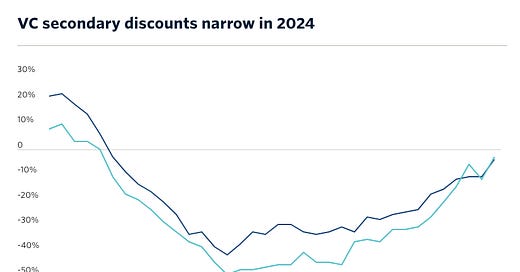AI models’ fusion future
📈 Trending Up: Arm competing with its customers? … Chinese tech stocks post-DeepSeek … corruption … inflationary policymaking … corruption …
📉 Trending Down: Cybersecurity … mafia recruiting … births in France, Iran, Romania, Belgium, Latvia … streaming harmony …
Tech employment: Meta told its staff that if they don’t like the new direction that the company is moving in, they should quit. Gone are the days when tech talent was paramount to the Mag7. Today, all staff are fungible at best and likely dead weight at worst.
That some of the Meta folks theoretically cut for performance reasons had good internal reviews is beside the point.
Partly this is AI changing the per-employee productivity picture. Partly, it's the cost of money and less spending enthusiasm. But it’s also, I think, companies grabbing missed power back from workers. When tech talent was in short supply, employers had to cater to their staff. Often with exceptional catering! Today, when tech talent is less limited, technology companies are enjoying being able to treat their human staff like Legos instead of people.
Might be a good time for tech workers to unionize.
From the IPO calendar
SailPoint priced its IPO at $23 per share, the peak of its raised price range guidance. The IPO raised comfortably north of $1 billion, and SailPoint will — once again — be a public company when it starts to trade later today.
Turo has given up on its IPO. Despite filing regular reports for years now as it counted down to warmer public-offering waters, the car rental startup is now set to stay private longer than expected.
For those keeping count, that’s one non-startup tech IPO completed thus far in 2025 and one startup tech IPO scuttled. Not a gangbuster start to the year. Partly the slow pace of S-1 filings can be blamed on:
Chart of the Day
PitchBook’s reporting on the discount that secondary shares offer to primary prices is worth your time.
To read this chart, start by noting the premium that secondary shares in startups commanded in the wake of the 2021-era ZIRP boom; if you wanted to buy shares already purchased by venture investors at the time, you had to pay more.
That changed quickly, with venture secondary discounts maxing out — or: primary startup valuations reaching their post-closing nadir — in 2023. Since the start of 2024, the gap between primary::secondary prices consistently narrowed until it reached near-zero to close out last year.
What’s driving the recovery in secondary pricing? I suspect that it’s a combination of hot AI startups fundamentally amping the demand side of secondary transactions for their shares. And, this is speculation, but I would also hazard that there are fewer ‘wounded’ secondary transactions afoot.
China hawks in shambles
From the news tornado that is 2025:
TikTok has returned to domestic App Stores after tech giants found themselves stuck between Congress (which passed a law forcing the divestment or ban of the social media app) and the Executive Branch, which thinks that TikTok should not be banned and instead become a negotiating tool. So much for Congress making laws, I suppose.
President Trump has pitched the idea of three-way defense cuts between the United States, Russia, and China. If the United States negotiates this, it will wind up with a diminished defensive posture and enemies with an advanced offensive stance. (This is also another episode in which Trump wants to do our enemies well at the expense of our allies. And if we’re focusing on Asia over Europe, don’t we still need the tools to do so?)
Trump also opened the door to selling F-35s to India. Lots of folks worry that if the United States does sell the jets to India, China and Russia will get their hands on their guts and diminish our comparative advantage in fifth-generation fighters.
China hawks, like myself, are perplexed.
AI models’ fusion future
If you were surprised that OpenAI decided to punt on releasing its o3 model as a standalone product, end its release of “non-chain-of-thought model[s]” after GPT-4.5 hits the market, and instead release combined models that blend its o-series of models (focused on reasoning) and its GPT line (focused on generation and less complex queries) into a single package, don’t be. Anthropic is working on the same idea, The Information reports.
The future is starting to come into focus. To wit:




